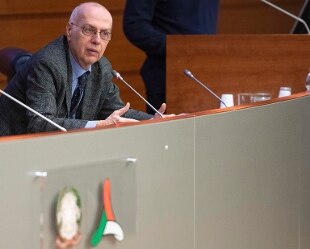Share
April 03, 2020Without measures in 6 months we would have had flock immunity with a large number of deaths and injuries: this was the epidemiologist Giovanni Rezza, head of infectious diseases of the Istituto Superiore di Sanità (ISS), during today's press conference on the epidemiological focus.
"If we had given up in the South we would have had a lot of Codogno" specifies Rezza, who is also a member of the technical scientific committee of the Civil Protection, speaking of "moderate optimism" for the regions of southern Italy.
Slight decline in the epidemiological curve
Rezza therefore speaks of "a slight decline in the epidemiological curve" which will have to be confirmed "in the next few days". Research on mortality that remains high "because it is linked only to positive cases" is developing "which also takes into account positive, but asymptomatic".
R just below 1
"The curve of new cases" in Italy "shows a sort of plateau, perhaps a slight decrease, but we cannot be confident about what is happening. Around March 9 the R (rate of contagiousness, ed) has fallen below slightly below 1 at national level "explains the epidemiologist." We must be very cautious about the models: we have cautiously positive signals, the transmission is decreasing in the most affected areas, the case curve is flattening and perhaps it is the prelude to an initial and gradual decrease in the number of new cases. But one must be very careful: the virus takes nothing as soon as the measures to regain circulation in a very active way are relaxed. "
For Rezza "if we had 'swept' the virus quickly in 6 months we would have exhausted the epidemic but leaving dead and injured, the hospitals would have been overwhelmed, the intensive care would not have known who to give the remains to. We have tried to keep the Intensity of virus circulation and the Italian data seem to confirm that these initial measures of containment and social distancing, harsh and rigorous, are giving their effects ".
Phase 2 should be gradual
When the emergency is over and it goes to phase 2, he continued, "there will be a restart of production activities, but the control on the territory will have to be greatly strengthened: early identification of cases, isolation, being pro active on control measures to at local level and develop strategies to minimize transmission, for example in households and among health professionals. Hospitals and RSAs have been a bit of an amplifier of the epidemic: a phase 2 must be gradual with very targeted and pro-active interventions to minimize viral circulation, "he concludes.

